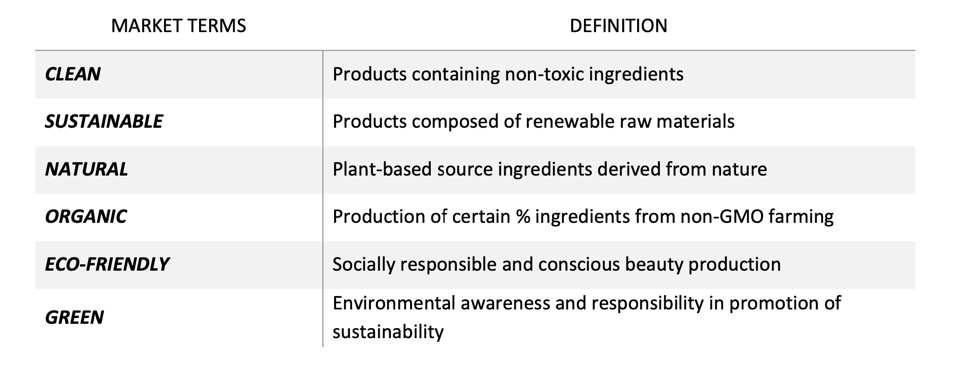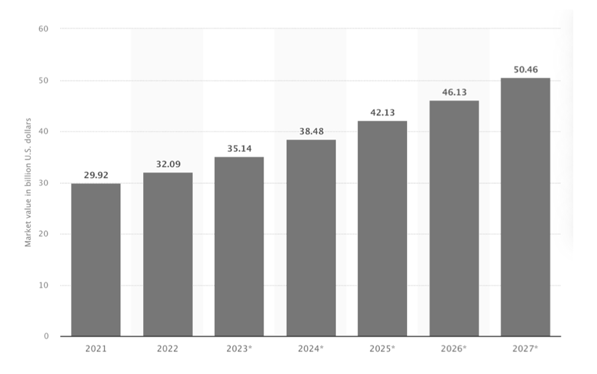Conscious consumerism has led to the revolutionary demand for beauty brands to deliver skincare products that are sustainable and ethical. But what does sustainability in skincare really look like?
Today’s consumers are changing their buying habits in favor of a lower environmental impact – and the beauty industry is responding, especially with sustainability initiatives in skincare. Before we get into what sustainability looks like in beauty, let’s first discuss the importance of beauty’s role in the effort.
The Beauty Industry’s Role in Sustainability
Simply put: The beauty industry is one of the worst offenders when it comes to water consumption and waste. Because water is an inexpensive filler in skincare and beauty, water has always been a main ingredient. In fact, on average, beauty products may contain anywhere from 60% to 85% water.
This is a problem across a few different dimensions.
- The Environment: By 2025, two-thirds of the world’s population will experience water shortages.
- The Consumer: Using water creates the need to add fillers and emulsifiers to keep products shelf-stable, diluting the important botanicals and actives that are meant to benefit the user.
- The Brand: Water usage requires larger package sizes, creating unnecessary post-consumer waste and a negative impact on the supply chain. (And consumers are noticing.)
The water problem is just one piece of the sustainability puzzle. While Earth’s climate has changed throughout its history, its current warming is happening at a rate we haven’t seen in the past 10,000 years. This change is a defining issue of our time and consumers not only demand but also expect brands to address it.
Making socially responsible beauty choices can drastically minimize the overall carbon footprint for both brands and individuals, benefitting our environment and answering our planet’s urgent call for change. So, what do these beauty choices look like in sustainable skincare?
How Beauty Brands Define Sustainability in Skincare
Beauty brands across the globe are developing skincare formulas and products that positively impact our earth. However, there are several different approaches to and definitions of sustainability in skincare.

Clean
Toxic ingredients such as formaldehyde, methylene glycol, quaternium 15 and mercury are common ingredients used in beauty products. When a beauty brand says their products are “clean,” they mean their formulations don’t use any toxic chemicals. As consumers look for ways to help the environment, they still care about improving their own wellness at the same time.
Natural
Beauty products that are “natural” should be completely derived from natural sources. Some examples of natural ingredients are avocado oil, coconut oil and other essential oils from plants. It’s important to note that “natural” doesn’t mean “vegan.” Being vegan means that a product doesn’t use animal testing, and there is no aspect of the product that uses or harms animals in any way. Vegan in beauty also means the product does not include any animal-derived ingredients. “Cruelty-free” means there is no harm to animals.
Organic
Unfortunately, many beauty products are made using GMO farming — the process of genetically modifying an organism using genetic engineering techniques. GMO ingredients can be extremely harmful to us, known to cause cancer and allergic reactions. When a product is “organic,” all ingredients in the product are made using non-GMO farming. Studies show that the demand for organic beauty products is increasing. Organic is also referred to is ingredients that are grown without the involvement of pesticides, harsh chemicals or any other synthetic ingredient.

Eco-friendly
Being “eco-friendly” is typically an overall brand initiative, meaning that all a brand’s product ingredients are naturally biodegradable and cruelty-free and sold in eco-packaging and refillable containers.
Green
Being “green” in the beauty industry goes even further than being eco-friendly — it’s when beauty products are sourced, produced and packaged in a way that won’t harm our planet. Every step of the product process is green, starting from when a seed is planted into the ground to grow an ingredient. This ensures that the product is not harming our planet in any way throughout its entire production.
Sustainable
This term is often used as an umbrella term for all the above, but it is also referring to the materials used to make a product. When a product is “sustainable” in the beauty industry, it really means that it is made from renewable raw materials — inexhaustible natural resources that can be restored in a short period of time.
By using renewable raw materials, we are ensuring that there is no wasteful energy being put into a product’s creation, and when the product is washed off or thrown away, it won’t further pollute the environment. Some examples of renewable raw materials are palm oil, sandalwood, shea butter, argan oil and mica.
Unpacking these market terms, it’s clear that sustainability in skincare needs to balance two priorities:
- Environmental impact
- Consumer health and wellness
It might seem simple, but achieving true sustainability in skincare and the beauty industry at large can be extremely challenging. Here’s why.
Top 2 Challenges with Sustainability in Skincare
Challenge #1: Cost
Offering sustainable products is extremely expensive, and some brands simply can’t afford to make the change.
It costs more to buy ethical ingredients and create sustainable packaging options. Unfortunately, harmful ingredients and materials are cheaper and easier to buy and manufacture.
However, beauty brands can overcome this obstacle by slowly incorporating sustainable efforts into their skincare line at a pace that works with their financial situation. Plus, more and more consumers are willing to pay more for sustainable products and packaging.
Challenge #2: Consumer Perception
The reality is that many consumers don’t view “sustainable” as “effective.” This is a challenging perception for brands to overcome – but proof will come over time. As mentioned, “sustainability” also includes clean and organic initiatives that enhance consumer wellness, and these efforts don’t have to sacrifice efficacy.
For example – and tying back to our water conversation from before – many brands are incorporating waterless formulas into their skincare lines that are inherently more sustainable and effective than alternatives. This is because waterless skincare products include more actives since they are not diluted with water, and the need for preservatives is reduced due to the elimination of water.
A Commitment to Sustainability in Skincare
Beauty brands that want to become sustainable shouldn’t just focus on their products but their brand as a whole.
As a private label skincare partner for beauty brands, we practice what we preach, and we’re committed to improving our planet in both our solutions for brands and our work environment.
We strive to develop healthy and pure formulas and use renewable ingredient options, and we’re mindful about the materials we use for our solutions and packaging. We also have a culture of sustainability at our office:
- Reusable tableware
- Low flow sinks and toilets
- Multi-zone HVAC unit
- Large windows for natural lighting
- Reusable shipping boxes
Becoming a sustainable beauty brand isn’t a once-and-done decision — it’s a continuous process that requires many conscious decisions to put our health and planet first. And it requires a culture shift in the very fabric of your brand.
Offering sustainable beauty products to your customers is the one of the best choices you can make.
Contact TaikiUSA today to find out how you can introduce sustainable beauty solutions into your beauty line.